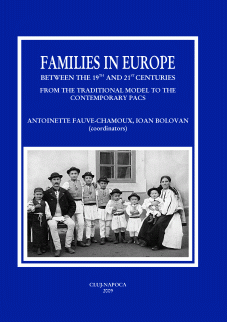Family Systems as Frameworks for Understanding Variation in Extra-Marital Births, Europe 1900-2000
Family Systems as Frameworks for Understanding Variation in Extra-Marital Births, Europe 1900-2000
Author(s): Jan KokSubject(s): History
Published by: Centrul de Studiere a Populaţiei
Keywords: extra-marital births; cohabitation; family systems; Europe; Netherlands; Romania
Summary/Abstract: Understanding regional variation in the past is important if we want to understand to what extent the European union is ‘converging’ in demographic terms. In order to chart and explain the regional variation of demographic phenomena, scholars often make use of typologies of ‘family systems’. Family systems have been evoked to explain intra-European differences in ages at marriage, celibacy rates, household size and composition, inheritance patterns et cetera. However, the variation in extramarital births (‘illegitimacy’) is rarely discussed or placed within these typologies. Is this because the phenomenon is more related to acute social problems and cultural changes than to the longue durée of family structures? Does illegitimacy form the limit of what family systems can explain? Or should we adjust our thinking on family systems to include ‘illegitimacy’? In this essay, regional variation in extra-marital births in Europe around 1900 is explored from the family system perspective. The question is also addressed to what extent the current variation can be seen as a continuation of past patterns. The paper focuses on variation in national illegitimacy rates from 1900-2000. In 1900, the lowest rates of Europe were found in the Netherlands, and the highest in Romania. However, given the differences in the frequency of marriage among (young) women, one would have expected the reverse. Therefore, part of the analysis is devoted to a comparison between the backgrounds of illegitimacy in these two countries.
Journal: Romanian Journal of Population Studies
- Issue Year: 3/2009
- Issue No: Supplement
- Page Range: 13-38
- Page Count: 26
- Language: English
- Content File-PDF

